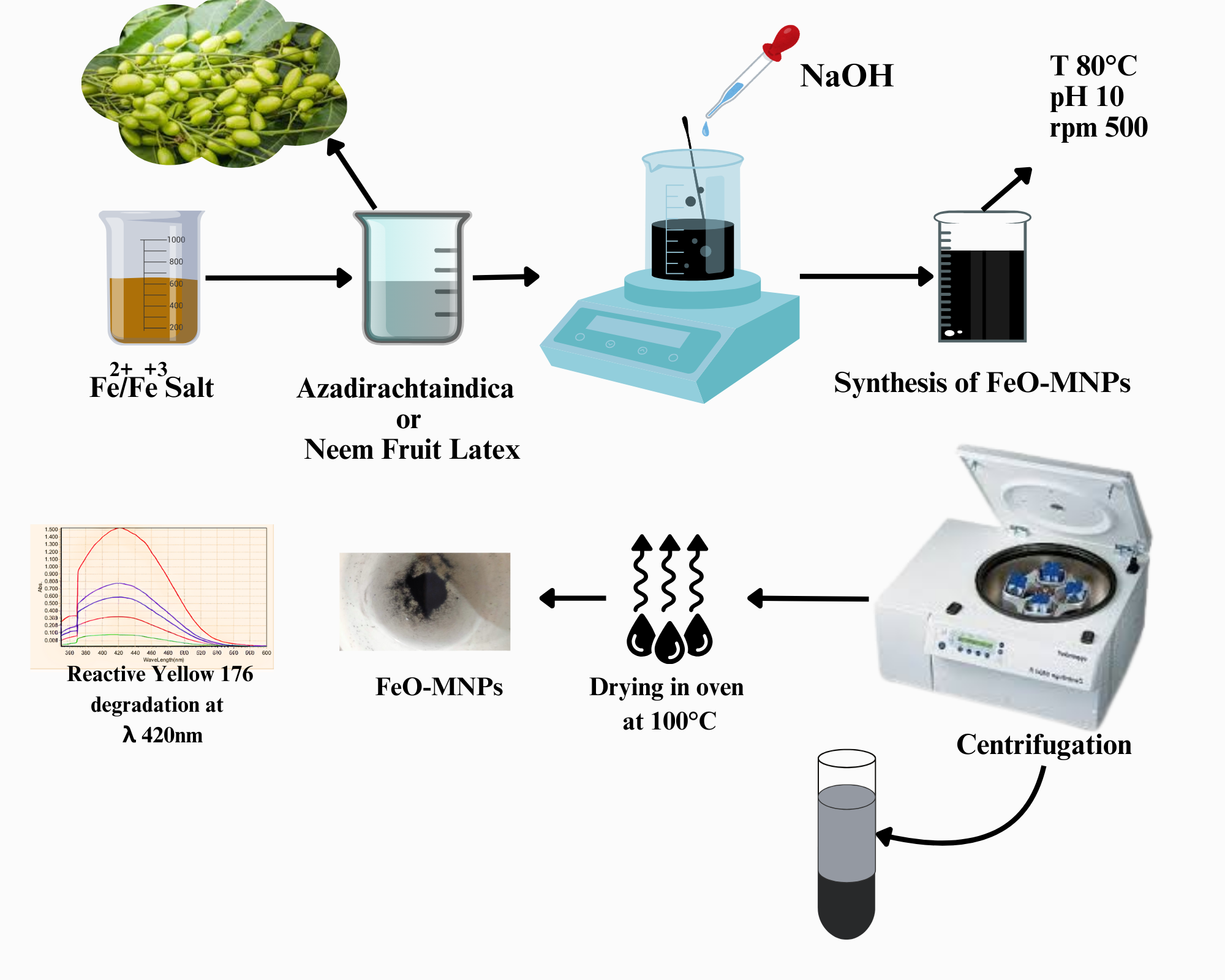
A considerable amount of wastewater is discharged by the textile industry primarily containing various pollutants, including dyes. The Reactive Yellow 176 dye is particularly notorious for its persistence and adverse effects on ecosystems. In response, the current work focuses on the preparation and application of iron oxide magnetic nanoparticles (FeO-MNPs), using unripe Azadirachta indica or Neem Fruit Latex (NFL) for the effective dye removal from aqueous media through the phenomena of adsorption. Iron oxide magnetic nanoparticles were synthesized using green co-precipitation method at mild temperature, employing Azadirachta indica fruit latex and ferric / ferrous chloride precursors. Various techniques of microscopy, spectroscopy, crystallographic and particle sizing were used to determine the synthesis of biogenic FeO-MNPs and for its characterization. Synthesized nanoparticles were in spherical shape with an average crystalline size of 16.5 nm, confirmed by X-ray Diffraction. The adjustability of the core size of particles, based on the latex concentration was confirmed by Atomic Force Microscopy whereas, Fourier Transform Infrared Spectroscopy demonstrated the presence of different functional groups that worked as reducing agents and contributed for stabilization of nanoparticles. These NFL based particles exhibited high adsorption capacity and rapid removal kinetics against reactive yellow 176 dye. Influence of dye concentration, pH and contact duration were thoroughly investigated, highlighting conditions that maximize removal capacity. For a dye concentration of 30 mg L-1, 99.95 % removal efficiency was achieved at pH 4 with removal capacities of 29.89 mg g -1 in 250 minutes and retained 78.52 % of their adsorption efficiency after three consecutive reuse cycles. The adsorption process was best described by pseudo-second-order (PSO) kinetic model, indicating that chemical interactions played a significant role in dye removal. Overall, this study sheds light on the potential applications of biogenic iron oxide nanoparticles in industrial effluent treatment, providing an effective, efficient and ecofriendly approach to mitigate aquatic pollution.
Total file downloads: 9